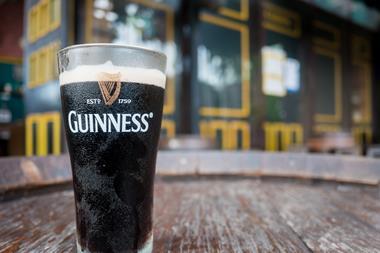Barolo, Brunello di Montalcino, Amarone. It's long been acknowledged the Italians produce some of the world's greatest wines. It's a bit of a backhanded compliment, however, for at the same it's always observed that if they only knew how to market them, Italian wines would be far more popular. So, with 12.4% growth last year, have the Italians finally got their act together? The truth is rather more prosaic. It's not the local, unpronounceable varietals that are responsible for the surge in sales in the past year, as recorded in The Grocer's exclusive research from Nielsen [MAT to w/e 29 December 2007]. It's the continuing growth of Pinot Grigios: hated by connoisseurs for their blandness but revelling in their mass appeal as a dry white wine, as the market continues to move away from the big, blowsy Australian Chardonnays. There's a similar story for Chile, with wine sales up 23% despite a strong peso, led by some confident promotional trading by Chile's major brands. But while Michael Cox, UK director for Wines of Chile, believes "the Pinot Grigio effect is making Sauvignon Blanc a dynamic category", he also credits "confident promotional trading by Chile's major brands", more focus on Chilean rosés - sales of which grew by 100% - and a successful switch to more expensive price points. "We made significant inroads in all sectors of the trade, especially supermarkets," says Cox. "And, importantly, the sales and distribution of quality wines over £5 improved substantially last year." With the continuing success of its powerful Sauvignon Blancs, New Zealand has long been able to sell its wines at a premium, with Cloudy Bay among the best-known and bestselling premium wine brands. But the 28% increase in sales year-on-year, following 15.3% the previous year and 44% in 2005, again hints at changing tastes in the UK as consumers choose to fill their glasses with wines that are more refined, drier and more aromatic than the previously popular juicy, sugary and heavy offerings. In terms of red, Pinot Noir is the new favourite, and both New Zealand are Chile, with their cool climates, are producing widely acclaimed juicy but lean Pinot Noirs in increasing numbers. These factors help explain the fall in market share for Australian wines, from 24.4% to 22.2%, although with sales of £1.1bn, up 5.6%, Oz remains far and away the UK's largest wine import market and increased the gap on its nearest rival France, which is up only 2.1% to £786m. While US wine sales grew 5.8%, the Americans' push to overtake French wine sales have been slowed by a significant increase in rosé sales, which tend to be at lower price points, together with currency savings on the weak dollar and increased promotional activity. "The UK was a sluggish market," admits John McLaren, UK director at the Wine Institute of California, "with enduring pressures on price and margin maintenance and reductions in linear shelf space, which has led to few opportunities for new brands to enter the market and develop." Overall, however, there were very few losers in 2007. South African wines managed to stem an 11% decline in sales in 2006, with 0.1% growth last year. And the only country that saw a decline in sales to the UK was Germany, falling 8.5% in value. Even here, the figures hide progress, claims Nicky Forrest, managing director of Wines of Germany UK. "Our strategy has been to concentrate on pushing premium wines. Our volumes of wines sold for over £5 have increased 32%, albeit from a small base. Wines under £3 in that time are down 19% in volume." Mass-market wine Liebfraumilch now accounts for only 20% of exports - compared with 45% in 1975 - and Forrest believes this is responsible for the volume fall, "which we aren't bothered about".n
Close menu
- Home
- Retail & Wholesale
-
Products & Suppliers
- Back to parent navigation item
- Products & Suppliers
-
Product Categories:
- Back to parent navigation item
- Product Categories:
- Alcoholic drinks
- Bakery
- Cereals & breakfast
- Cheese
- Chicken & poultry
- Chocolate
- Confectionery
- Crisps, nuts & snacks
- Dairy
- Fish
- Fresh produce
- Frozen
- Household
- Meat
- Own Label
- Sauces & condiments
- Seasonal
- Soft drinks
- Vaping
- Vegan & plant-based
- World foods
- Suppliers
- People
- Reports & Data
-
Topics A-Z
- Back to parent navigation item
- Topics A-Z
-
Popular topics:
- Back to parent navigation item
- Popular topics:
- Cost of living crisis
- Crime
- Deposit Return Schemes
- Finance
- Government & Regulation
- Health
- Inflation
- Loyalty
- Marketing
- Mergers & Acquisitions
- New Product Development
- Sourcing
- Supply chain
- Sustainability & environment
- Technology
- Ultra Processed Foods
- Vaping
- A-Z all topics
- Content by type:
- Events
- Subscribe now
Sign in to comment on this article
Not logged in before? Register for FREE guest access today.
You will be able to:
- Read more stories
- Receive daily newsletters
- Comment on stories
Advert



















No comments yet